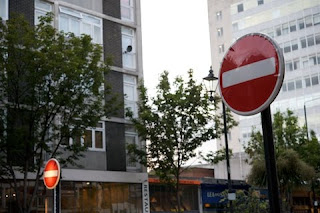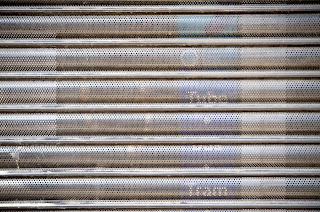Find at least 2 normally occurring situations in which there are 2 points, and take the photographs of them quite naturally.
***

This is an example of two points; two arrows on a shop window. Since two points are almost same in size and they are placed almost in the same distance from the centre, both attract attention equally. However, in this particular photograph, the reflection of the green traffic light is very strong, so it might be the first thing to attract the viewer's attention, which was not my attention when taking this photograph.

Two flags on a roof of a pub can be seen as two points. Both of the points are almost same in size and placed almost equally from the centre, so both should attract attention equally, which makes the image static.

The red traffic signs are two points in this photograph. The right one is close to the viewer and bigger in the photograph, whereas the left one is far from the viewer and is seen smaller. Since the right one is bigger, it attracts the viewer's attention first, then the viewer's eyes are drawn to the left one, which is smaller but brighter.














